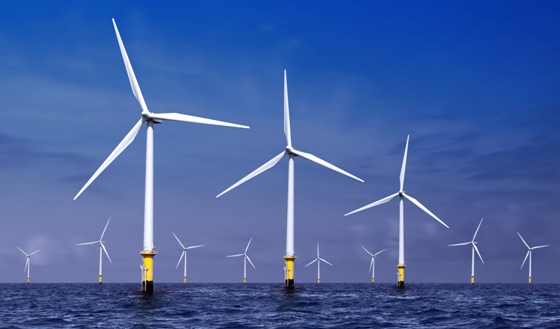With cleaner emissions, 21 nations foster growth
Good news for fighting climate change: A new study finds that countries can increase their gross domestic product while cutting reliance on carbon fuels.
Twenty-one countries aren’t just tilting at windmills when it comes to fighting climate change. They are demonstrating that reducing greenhouse gas emissions doesn’t necessarily prevent economic growth.
That’s an optimistic note from a new study that found that 19 European nations as well as the United States and Uzbekistan saw increases in their gross national product accompanied by declines in greenhouse gas emissions.
The average reduction of carbon emissions was 15 percent, much of it as a result of development of renewable energy sources, according to the study by the World Resources Institute.
Demark leads in reductions
Denmark reported the largest reduction in carbon emissions, 30 percent, while its economy grew by 8 percent between 2000 and 2014, the report said.
Five other countries saw reductions of 20 percent or more: Ukraine, Hungary, Romania, Slovakia and the United Kingdom.
The United States was the largest country on the list. It reported a 6 percent reduction in greenhouse emissions, largely through shifts from coal to renewable energy sources, while the economy grew by 28 percent.
Other countries on the list were Austria, Belgium, Bulgaria, Czech Republic, Finland, France, Germany, Ireland, The Netherlands, Portugal, Spain, Sweden, and Switzerland.
Multiple tactics limit emissions
The study said no single strategy drove the emission declines amidst economic growth.
For example, Denmark, with the greatest percentage reduction in emissions, has developed renewable energy, such as wind farms, while imposing energy taxes. As a result, Danes pay about 60 percent more for energy on average than other Europeans.
Sweden implemented a carbon tax in 1991 and has gradually increased it while maintaining a lower tax for farming and industry and a higher level for households.
Nations reduce carbon-intensive industry
Nineteen of the 21 countries also registered reductions in the share of their gross national product from carbon-intensive industry, including cuts of 10 percent by Ukraine and 9 percent by Finland and Ireland. (The reduction in the U.S. was 3 percent.) Two countries, Uzbekistan and Bulgaria actually increased the share of carbon-intensive industry while still posting reductions in emissions overall.
The report noted that it is not clear whether some carbon emissions simply transferred as manufacturers moved their operations across borders.
Global emissions steady
However, the International Energy Agency in March announced that global carbon emissions were flat in 2015 for the second year in a row.
“The new figures confirm last year’s surprising but welcome news. We have now seen two straight years of greenhouse gas emissions” during a period of economic growth, said Fatih Birol, executive director of the energy agency.
The agency said global emissions of carbon dioxide totaled 32.1 billion tons in 2015 and preliminary data suggested that electricity generated by renewable energy sources played a pivotal role.
With economic growth at 3 percent in 2015, the data shows “the link between economic growth and emissions growth is weakening,” the agency said.
China, United States reduce carbons
China and the United States, the world’s largest carbon dioxide emitters, both reported declines in 2015, China by 1 percent and the United States by 2 percent, according to the agency, as both countries pushed down coal use. At the same time, those declines were offset by increased emissions in developing Asian and Middle East economies.
In the United States, the Obama administration’s Clean Power Plan has set a goal of reducing emissions to 32 percent below 2005 levels by 2030. That plan has been challenged by 27 states, including coal-producing West Virginia and oil-producing Texas, which say the plan would cause economic devastation. The U.S. Supreme Court will hold a hearing on the plan in June.
According to an analysis by the U.S. Energy Information Administration, the Obama plan would reduce carbon dioxide emissions by an additional six percent between 2020 and 2025 while gross domestic product would increase by 13 percent.
Climate change on global agenda
The administration also argues that the United States must set an example globally as world leaders commit to reducing carbon emissions.
In a major step to fight climate change, 189 countries accounting for nearly all of the world’s carbon emissions agreed to limit greenhouse emissions last year at the Paris Climate Conference.
The nations will meet again in November in Marrakech, Morocco to discuss how they will accomplish the reductions – and, importantly especially for developing nations, how they will pay for them.
In March, Obama and Canadian Prime Minister Justin Trudeau announced a new climate partnership between the two nations in support of the Paris agreement. The two leaders pledged to reduce methane emissions from the oil and gas industry by up to 45 percent by 2020.
In a statement, they called the Paris agreement was a “turning point in global efforts to combat climate change and anchor economic growth in clean development.”
















There are no comments
Add yours